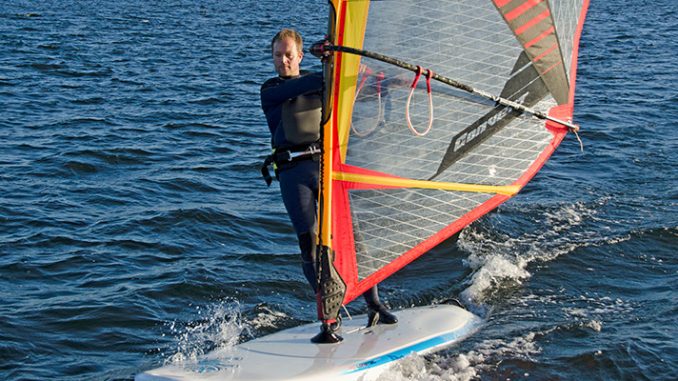
The fundamentals of how windsurfing works…
Words: Simon Winkley
Photos: John Humphries
Illustrations: Pete Galvin
When I first stumbled across windsurfing as an informal learner it was relatively easy to perform simple actions to make the thing work. However, being an inquisitive chap I wanted to know how and why the board and rig did what it did yet no one seemed to be offering any sort of sensible advice. I remember being told by a guy who always windsurfed barefoot despite stubbing his toes with alarming frequency, “It’s all in the realm of physics – a bit technical mate…”
I felt comfortable with the concept of catching some wind in the sail and heading off downwind (and that’s mostly what I did anyway). Yet how a windsurfer could go in any other directions – even upwind, against the very force that was providing the power in the first place – was beyond me and I was determined to find out what was going on.
The guy with the delicate feet was right. The answer is to be found in physics but take care. Type ‘forces on sails’ into Wikipedia and scroll down to marvel at the sheer complexity of information available: graphs of propulsive force coefficients, equations to determine drag predomination and lavish descriptions of lift variables and vortex shedding. This is all swashbuckling stuff – if indeed you have the time and brain capacity for it. For the rest of us, however, here’s a quick look at some essentials in this otherwise technical subject.
AIRFLOW
A windsurf sail changes the direction and pressure of the air that it stands in the way of. The air must move onto the sail, flow as smoothly as possible over it and exit the sail with the least fuss. This is primarily achieved with a well-rigged sail pulled-in to the correct position.
A common understanding of how a sail works is this: air splits into two streams as it hits the sail – one of which passes to leeward and the other to windward and that the difference in speed of these two streams causes lift. This is thanks to ‘Equal Transit Theory’ which suggests that air molecules separate at the luff and meet up again on the back edge – one of which is said to have travelled a further distance around the outside of the sail and the other a shorter distance around the inside. All of this is no longer accepted as credible, however and – for those who are familiar with it – Bernoulli’s principle, whilst sound, does not apply here.
Lift is actually generated in two ways:
- As the air accelerates over the downwind side (which creates an area of low pressure on the downwind side)
- As the air travels around the upwind side and is forced upwind which pushes, or thrusts, the sail downwind. To add clarity to this concept imagine holding an angled hand out of the window of a moving car with your index finger higher than your little finger. As the air hits the palm of your hand it will be forced downwards and your hand will be thrust upwards. This is also like air being forced over the downwards facing edge of an aeroplane wing to create upwards lift)
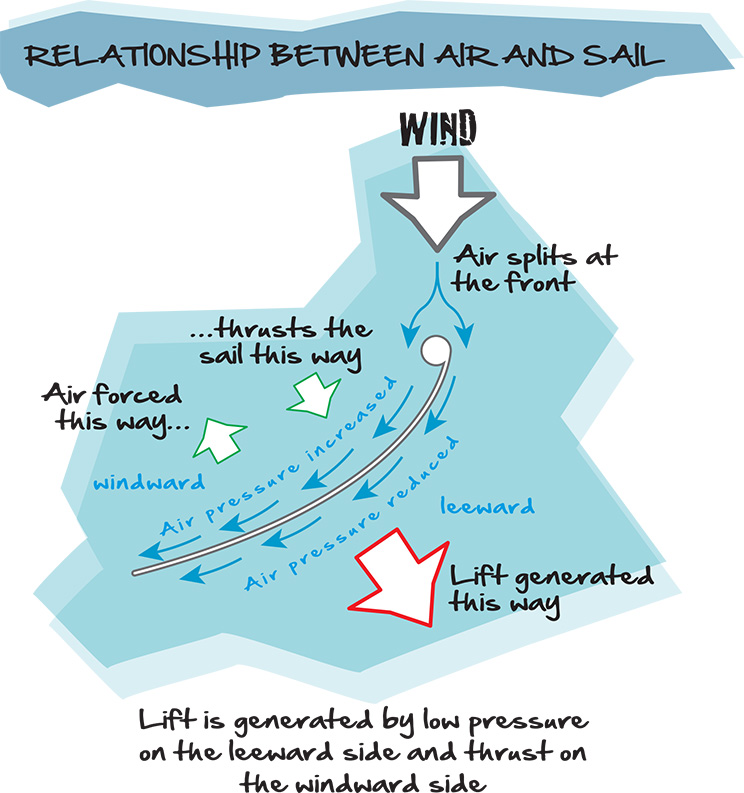
SMOOTH AIRFLOW
Laminar flow is often used to describe smooth airflow over both sides of a sail but there is much more to the story than this.
The term actually describes how:
- the air molecules touching the sail will slow down to almost zero due to friction (skin friction drag)
- the air molecules slightly further away from the sail will move a bit faster
- the air molecules even further away from the sail will move faster still
The region surrounding the sail where laminar flow occurs is called the boundary layer and can be up to a few inches thick. Air outside this layer is not affected by skin friction drag.
Laminar flow is rather like sliding a loose pack of cards along a table. The card at the bottom of the pile will not move very far along the table as it experiences friction against it. The next card up will move a bit further and so on, with the uppermost card travelling the furthest. In the same way you have layers of air at different speeds sliding over the sail. Laminar flow is good news because this layering produces less skin friction drag. If air only travelled in one thick slab then all of it would be slowed against the sail and windsurfing would not be possible. This would be like picking up the cards, gluing them all together and sliding the pack across the table again. The card at the top would have the same drag as the card at the bottom and not travel freely forwards, thus reducing the overall ability of the pack of cards to travel smoothly across the table.
TURBULENT AIRFLOW
Turbulent flow is air swirling and colliding chaotically instead of sliding past itself in smooth layers. Carefully setting our sail to the wind on a close, beam or broad reach will avoid significant turbulence.
Sailing too close to the wind, sailing dead downwind on a run or pulling in the sail too much before planing occurs will, on the other hand, encourage it. Even so there is very little we can do to avoid some degree of change from laminar to turbulent flow as it will happen at some point. Such separation occurs when the airflow no longer follows the curve of the sail, particularly as it shears off at some point on the leeward side. At the point of separation no lift is being generated and the flow becomes stalled.
LATERAL RESISTANCE
Now let’s go back to lift which, in simple terms, wants to pull the sail a bit downwind and a bit forwards. The forwards element is great yet not many windsurfers are fans of going sideways. This is where the board’s engagement with the water comes in.
Imagine if a board was literally floating above the water’s surface, totally disconnected from it – like a hoverboard-windsurfer of the future perhaps or a hot air balloon blown at the whim of the wind. With nothing to grip onto, the sideways element would be significant and would be impossible to reduce. No need to worry though – boards are suitably connected to the water and, as such, all have some degree of resistance to going sideways.
In the photos, the solid arrows represent the sideways force on the board caused by the lift from the sail (transferred though the mastfoot and the body of the person windsurfing) and the opaque arrows represent lateral resistance.
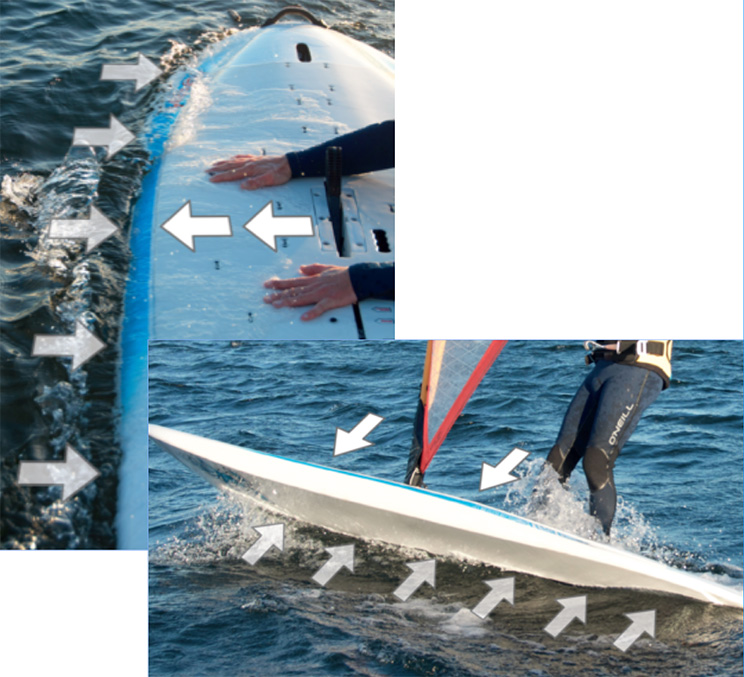
In the first one I am standing in shallow water pressing down on the board and trying to push it sideways which is not easy. You can clearly see how the water is resisting the sideways passage of the board through it, thanks to the board’s length/thickness (volume), fin and daggerboard. In the next photo I am deeply engaging the windward rail – a trick to increase lateral resistance in the absence of a daggerboard, typically in non-planing conditions on a smaller volume board. Again the water can be seen rebelling against the board’s best efforts to push sideways through it.
So what is the upshot of all of this? Well, the board – subject to the hydrodynamic lift that its lateral resistance creates (as a result of the aerodynamic lift from a correctly-set sail) – simply moves forwards through the water.
And that, in very simple terms, is how a windsurfer works!
Simon Winkley is a RYA Advanced Windsurfing Instructor and a RYA Windsurfing Trainer running instructor courses across the UK and overseas. He is supported by Starboard, Severne and Bray Lake Watersports and provides windsurfing coaching holidays through Ocean Elements in Vassiliki.

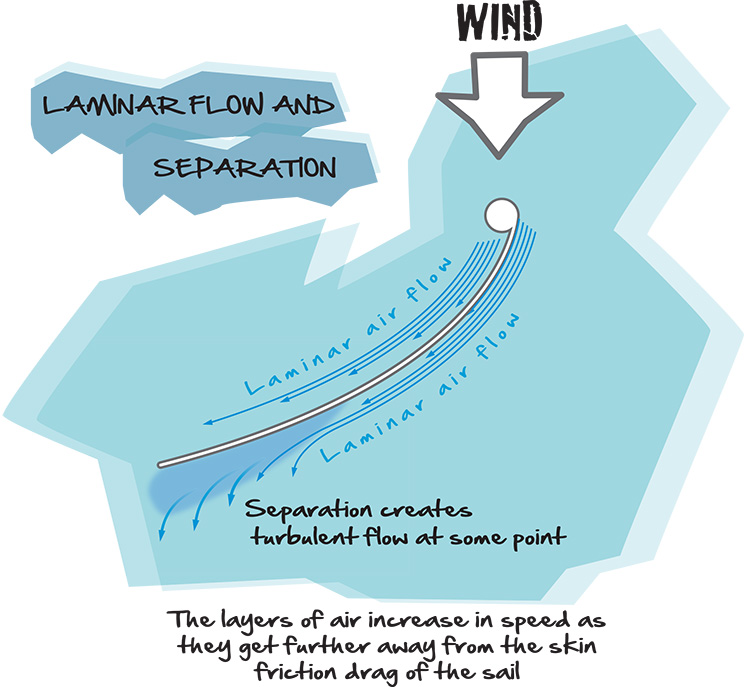
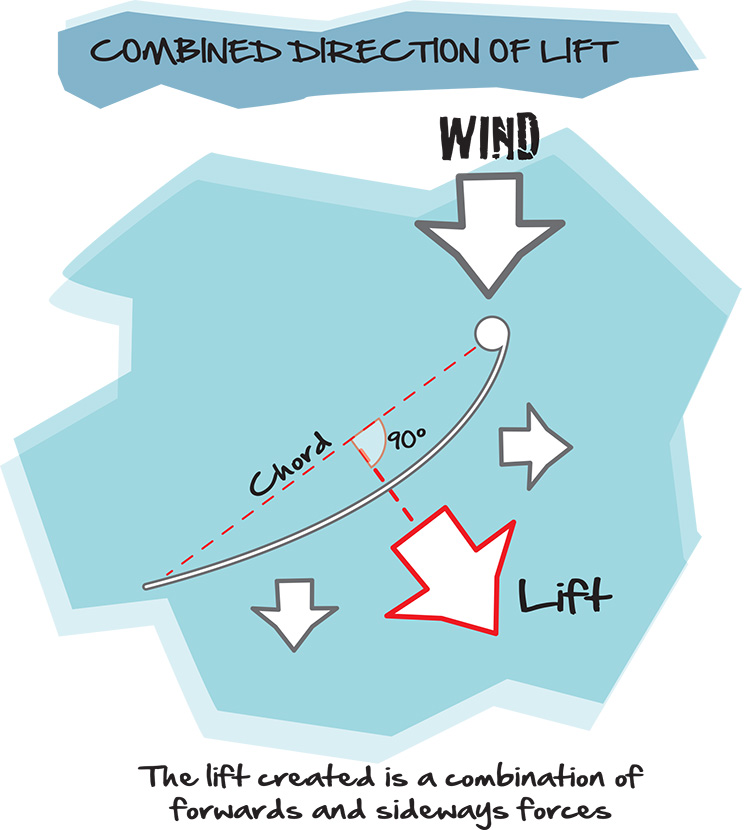
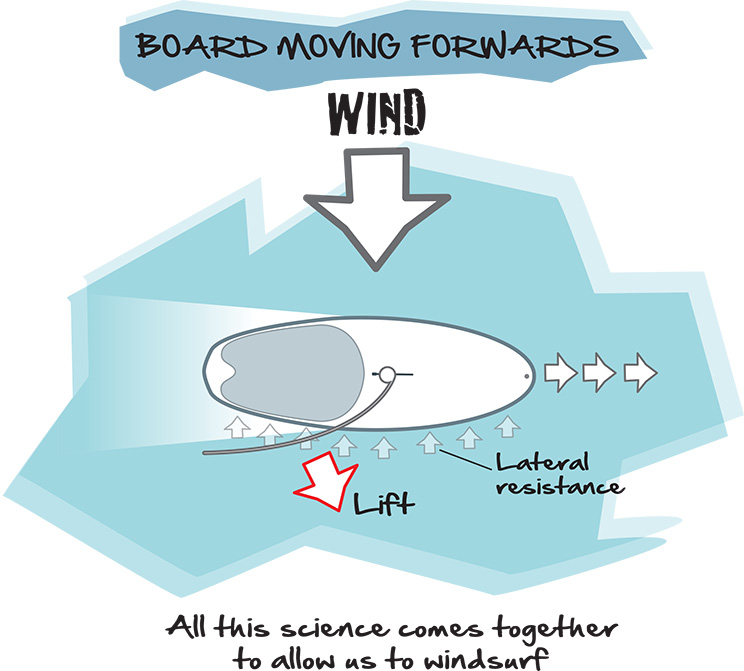
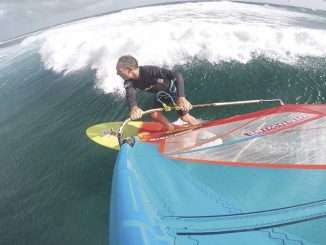
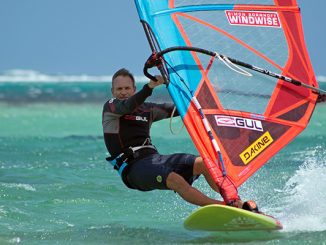
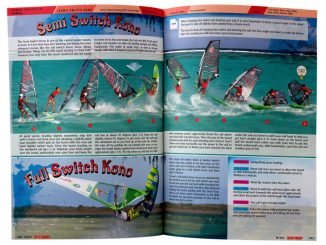
Leave a Reply